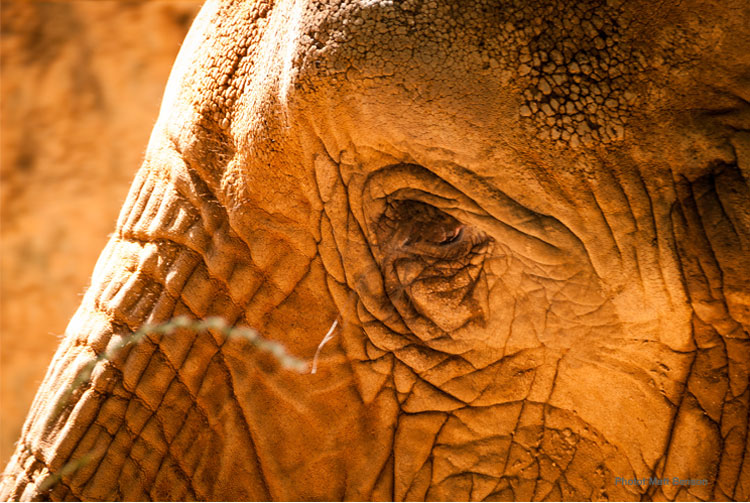
“Elephants are extremely social, long-lived beings whose intelligence is informed by deep memories and passions”, says Katy Payne.
The extent to which elephants' emotions are shared is especially striking. This is reflected in their patterns of calling during periods of searching, finding, celebrating, comforting and helping one another.
A wide net of compassion surrounds young elephants and their adult female relatives at all times. Elephants' experiences are, in short, collective, and the collectivity of their experience colours their responses to everything. The collectivity escalates and multiplies the trauma associated with losses, and in long-lived animals with long memories, such losses are not soon overcome.
Elephants that survive poaching and culling may never fully recover from the repeated loss of what they once identified with and held dear. This is in the nature of elephants--it cannot be changed.
There are so many passions you see right in front of you if you just watch a social group of elephants. There’s competition, there’s play, there’s tons of fun. There are attachments among them. And the oldest female in an elephant family group is called the matriarch. She makes most of the decisions unless you could say that the youngest baby makes most of the decisions. She follows very closely what the youngest baby is up to, often her grandchild.

Katy Payne remembers one occasion when we were watching from an observation tower that stood above a very large forest clearing,” we heard a scream from a baby way over on the east side of the clearing. Well, there were 80 elephants in front of us, but way over on the west side, one huge adult matriarch came running and ran the full length of the clearing. Well, it was the baby’s grandmother. So there is a passion, there is acquaintance with a call of an animal who probably hasn’t made very many calls in her life. And there is this huge sense of responsibility for the welfare of that calf.
On another occasion, they witnessed a very sad and very marvellous thing. They witnessed the death of a young calf, a yearling calf, on the clearing right in front of their observation platform. This baby had come in with her mother repeatedly. She was very thin and weak, and on that day they knew she was going to die. She laid down and within a couple of hours, indeed, she had died. The team was keeping a video record even though it was very painful and hard for them to do so, but they did this for the rest of the day and all the next day.
And during that time, more than 100 elephants, unrelated to the calf, walked past the place where the little corpse lay on the ground. Every single one of them did something that showed alarm, concern, or somehow showed they were aware of something novel that they were approaching. Some of them took a detour around. About a quarter of them tried to lift the body up with their tusks and their trunks, sometimes trying over and over again. One adolescent male attempted to lift up this little corpse 57 times and walked away from it and came back five different times. Now, these were not related animals.
“You know’, said Ms Payne, “ I have to interpret it as a human, and I have to say that on this occasion it seemed that elephants were taking responsibility for other members of their species, without regard for relationship at a time when they perceived somehow that help was needed.”
And so, what observing these compassionate interactions has done for Katy Payne is to make her feel that what lies ahead to be discovered is absolutely limitless. “We are not at the pinnacle of human knowledge. We are just beginning.”
Katy Payne is the director of the Elephant Listening Project and a researcher in the Bioacoustics Research Program of Cornell University’s Laboratory of Ornithology. She is part of the research team that produced this original recording, “Songs of the Humpback Whale.” Her book is Silent Thunder: In the Presence of Elephant
Partly syndicated from onbeing.org



